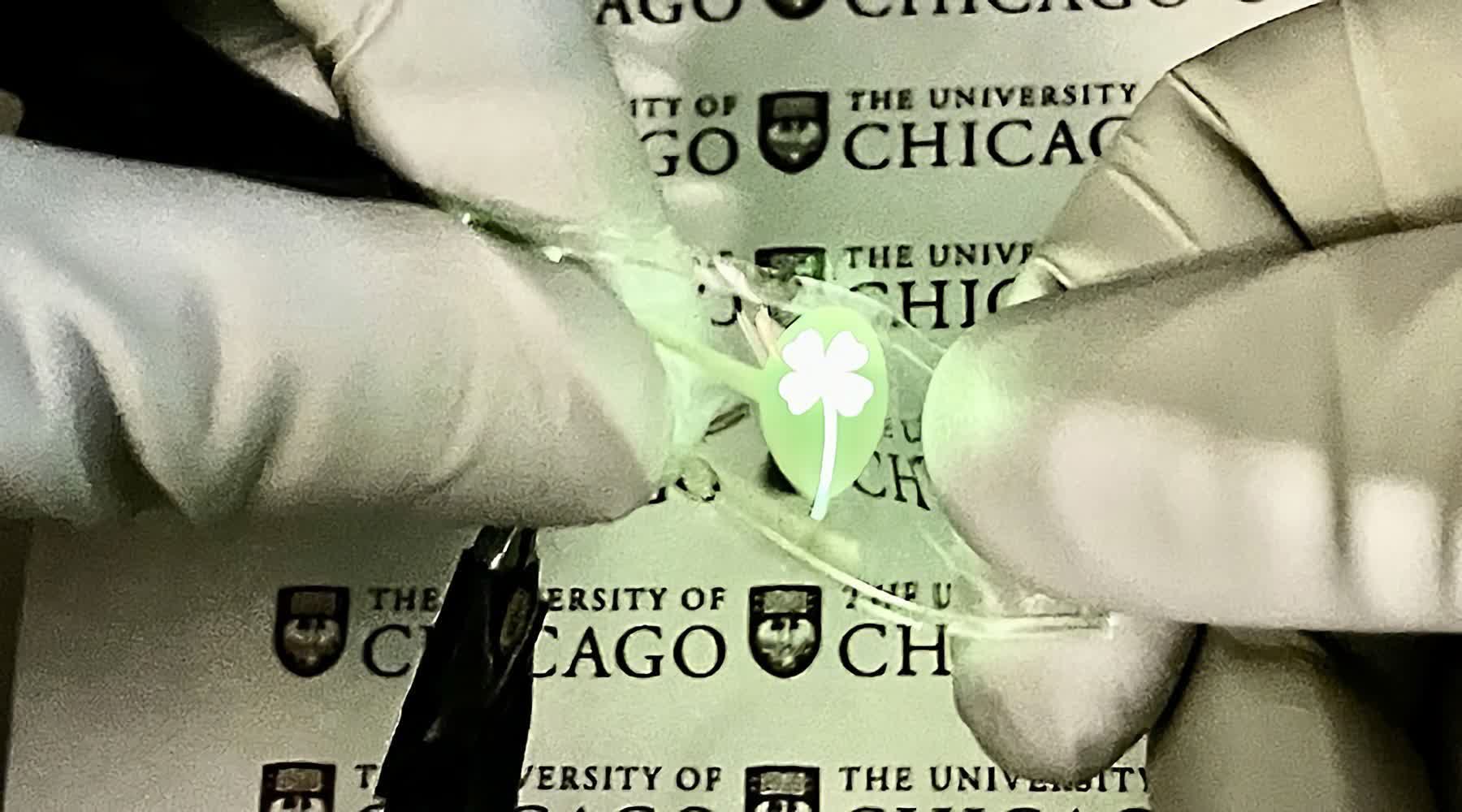Why it matters: Many companies believe foldable phones are making a comeback. However, limited offerings, steep prices, and durability questions have kept clamshell smartphones from becoming mainstream. One research group has set out to solve all those problems using material science to develop a rubbery OLED screen.
Scientists from the University of Chicago's Pritzker School of Molecular Engineering have developed a prototype OLED display that can bend, stretch, twist, and fold better than any flexible screens we have seen so far. The researchers claim that the display can extend to twice its actual size without compromising its durability.
The material looks like a transparent rubber fob that one might put on a keychain. When current is applied, an image or pattern lights up. The displayed picture has a high level of clarity and is luminous enough that the substance loses nearly all of its transparency in the area of the image.
The team did not stumble upon the substance by accident, as many other breakthrough discoveries do. Molecular Engineering Professor Juan de Pablo and Assistant Professor Sihong Wang intentionally set out to see if they could develop a highly flexible light-emitting rubber. Their combined knowledge of advanced polymers and electroluminescence enabled them to tackle the goal from the molecular level.
"We have been able to develop atomic models of the new polymers of interest and, with these models, we simulated what happens to these molecules when you pull on them and try to bend them," de Pablo said in a press release. "Now that we understand these properties at a molecular level, we have a framework to engineer new materials where flexibility and luminescence are optimized."
Wang has previously worked on creating neuromorphic computing chips that can flex and stretch. He said the display is one step in his "dream" to make stretchable versions of all computer components. The rubbery screen is a "huge" leap toward that goal.
We have also demonstrated fully stretchable OLED devices, which indicates that stretchable TADF polymers provide a path towards simultaneously achieving high efficiency, brightness, switching speed and stretchability as well as low driving voltage. pic.twitter.com/So5iUnTE8Z
– Sihong Wang (@SihongWang_UChi) April 6, 2023
Currently, the prototype is minimal in size and can only display two colors (green and white). The team's next step is to increase the color gamut. Additionally, while the device's efficiency is already on par with contemporary OLEDs, Wang would like to increase performance. He tweeted that a "quantum yield of 100 percent" is theoretically achievable.
The engineers see industries using the tech for more than just foldable phones. While the polymer certainly would improve the production costs and durability of clamshell devices, Wang sees manufacturers using the screens in form-fitting wearables, medical instruments, and better implantable optogenetics monitors used to examine neural activity and brain diseases.
If the technicality of material science doesn't make your head swim, Wang and de Pablo's study, "High-efficiency stretchable light-emitting polymers from thermally activated delayed fluorescence," is available in April's Nature science journal.
